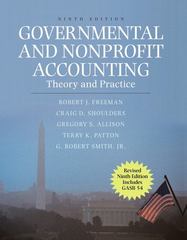Question
Question : True / False Questions 45. When the market interes... Save True / False Questions 45. When the market interest rate exceeds the coupon
Save
True / False Questions
45. When the market interest rate exceeds the coupon rate, bonds sell for less than face value to
provide enough compensation to investors.
True False
46. A bond's rate of return is equal to its coupon payment divided by the price paid for the bond.
True False
47. A long-term investor would more likely be interested in a bond's current yield rather than its
yield to maturity.
True False
48. Bonds that have a Standard & Poor's rating of BBB or better are considered to be investment-
grade bonds.
True False
49. It would be realistic to read an ask price listed as 100.127 and a bid price of 100.143.
True False
50. Even when the yield curve is upward-sloping, investors might rationally stay away from long-
term bonds.
True False
51. Zero-coupon bonds are issued at prices below face value, and the investor's return comes from
the difference between the purchase price and the payment of face value at maturity.
True False
52. Bond ratings measure a bond's credit risk.
True False
Multiple Choice Questions
53. The coupon rate of a bond equals:
A. its yield to maturity.
B. a defined percentage of its face value.
C. the yield to maturity when the bond sells at a discount.
D. the annual interest divided by the current market price.
54. Assume a bond is currently selling at par value. What will happen if the bond's expected cash
flows are discounted at a rate lower than the bond's coupon rate?
A. The price of the bond will increase.
B. The coupon rate of the bond will increase.
C. The par value of the bond will decrease.
D. The coupon payments will be adjusted to the new discount rate.
55. When an investor purchases a $1,000 par value bond that was quoted at 97.162, the investor:
A. receives 97.162% of the stated coupon payments.
B. receives $971.62 upon the maturity date of the bond.
C. pays 97.162% of face value for the bond.
D. pays $10,971.62 for a $10,000 face value bond.
56. What happens to a discount bond as the time to maturity decreases?
A. The coupon rate increases.
B. The bond price increases.
C. The coupon rate decreases.
D. The bond price decreases.
57. How much should you pay for a $1,000 bond with 10% coupon, annual payments, and 5 years to
maturity if the interest rate is 12%?
A. $927.90
B. $981.40
C. $1,000.00
D. $1,075.82
58. A bond's yield to maturity takes into consideration:
A. current yield but not any price changes.
B. price changes but not the current yield.
C. both the current yield and any price changes.
D. neither the current yield nor any price changes.
59. What is the yield to maturity for a bond paying $100 annually that has 6 years until maturity and sells for $1,000?
A. 6.0%
B. 8.5%
C. 10.0%
D. 12.5%
60. Consider a 3-year bond with a par value of $1,000 and an 8% annual coupon. If interest rates change from 8 to 6% the bond's price will:
A. increase by $51.54.
B. decrease by $51.54.
C. increase by $53.46.
D. decrease by $53.46.
61. What is the rate of return for an investor who pays $1,054.47 for a 3-year bond with coupon of 6.5% and sells the bond 1 year later for $1,037.19?
A. 4.53%
B. 5.33%
C. 5.16%
D. 4.92%
62. When the yield curve is upward-sloping, then:
A. short-maturity bonds offer the highest coupon rates.
B. long-maturity bonds are priced above par value.
C. short-maturity bonds yield less than long-maturity bonds.
D. long-maturity bonds increase in price when interest rates increase.
63. Nominal U.S. Treasury bond yields:
A. are constant over time.
B. are equal to the real yields.
C. include a default premium.
D. include an inflation premium.
64. Which one of the following bonds would be likely to exhibit a greater degree of interest rate risk?
A. A zero-coupon bond with 20 years until maturity
B. A coupon-paying bond with 20 years until maturity
C. A floating-rate bond with 20 years until maturity
D. A zero-coupon bond with 30 years until maturity
65. Investors who purchase bonds having lower credit ratings should expect:
A. lower yields to maturity.
B. higher default possibilities.
C. lower coupon payments.
D. higher purchase prices.
66. What is the amount of the annual coupon payment for a bond that has 6 years until maturity, sells for $1,050, and has a yield to maturity of 9.37%?
A. $98.64
B. $95.27
C. $101.38
D. $104.97
And if possible explain the problems with numbers.
Step by Step Solution
There are 3 Steps involved in it
Step: 1

Get Instant Access to Expert-Tailored Solutions
See step-by-step solutions with expert insights and AI powered tools for academic success
Step: 2

Step: 3

Ace Your Homework with AI
Get the answers you need in no time with our AI-driven, step-by-step assistance
Get Started


